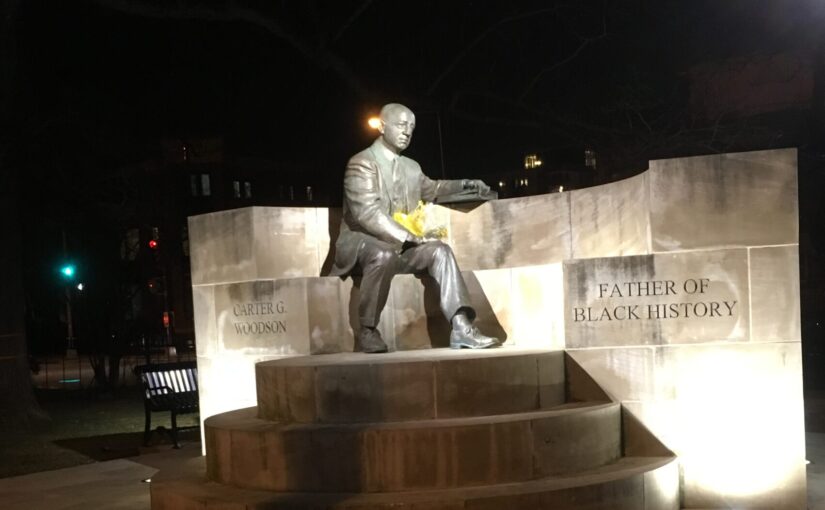It’s Black History Month, so I am continuing with the series of posts regarding Shaw resident and Father of Black History, Carter G. Woodson and his book The Mis-Education of the Negro, published in 1933.
Okay. Last chapter. Last day of a very short month.
The oppressor, however, raises his voice to the contrary. He teaches the Negro that he has no worth-while past, that his race has done nothing significant since the beginning of time, and that there is no evidence that he will ever achieve anything great. The education of the Negro then must be carefully directed lest the race may waste time trying to do the impossible. Lead the Negro to believe this and thus control his thinking. If you can thereby determine what he will think, you will not need to worry about what he will do. You will not have to tell him to go to the back door. He will go without being told; and if there is no back door he will have one cut for his special benefit.
Woodson points to the main problem and the purpose of his life’s work. African Americans in their own schools and in majority white schools were being taught that they had nothing to offer and never had anything to offer to the world. Woodson sought to counter that with the Association for the Study of Negro Life and History.
The Association for the Study of Negro Life and History, however, has no special brand for the solution of the race problem except to learn to think. No general program of uplift for the Negroes in all parts of the world will be any more successful than such a procedure would be in the case of members of other races under different circumstances. What will help a Negro in Alabama may prove harmful to one in Maine. The African Negro may find his progress retarded by applying “methods used for the elevation of the Negro in America.” A thinking man, however, learns to deal wisely with conditions as he finds them rather than to take orders from some one who knows nothing about his status and cares less. At present the Negro, both in Africa and America, is being turned first here and there experimentally by so-called friends who in the final analysis assist the Negro merely in remaining in the dark.
So not all Black people are alike and there is no one size fits all solution to the African diaspora’s problems.
And finally, the last paragraph:
In this outline there is no animus, nothing to engender race hate. The Association does not bring out such publications. The aim of this organization is to set forth facts in scientific form, for facts properly set forth will tell their own story. No advantage can be gained by merely inflaming the Negro’s mind against his traducers. In a manner they deserve to be congratulated for taking care of their own interests so well. The Negro needs to become angry with himself because he has not handled his own affairs wisely. In other words, the Negro must learn from others how to take care of himself in this trying ordeal. He must not remain content with taking over what others set aside for him and then come in the guise of friends to subject even that limited information to further misinterpretation.

